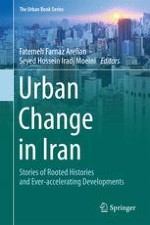2016 | OriginalPaper | Chapter
10. From Utopia to Dystopia: Shushtar-e-No, Endeavour Towards Paradigmatic Shift
Author : M. Reza Shirazi
Published in: Urban Change in Iran
Publisher: Springer International Publishing
Activate our intelligent search to find suitable subject content or patents.
Select sections of text to find matching patents with Artificial Intelligence. powered by
Select sections of text to find additional relevant content using AI-assisted search. powered by
